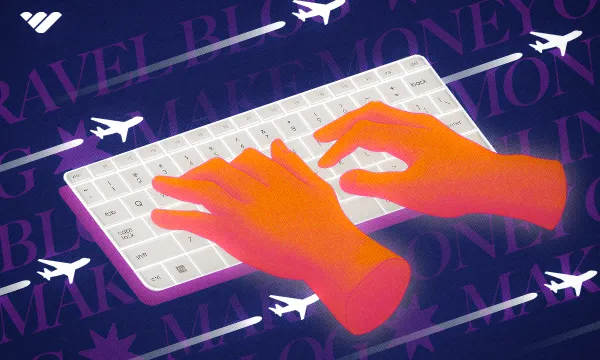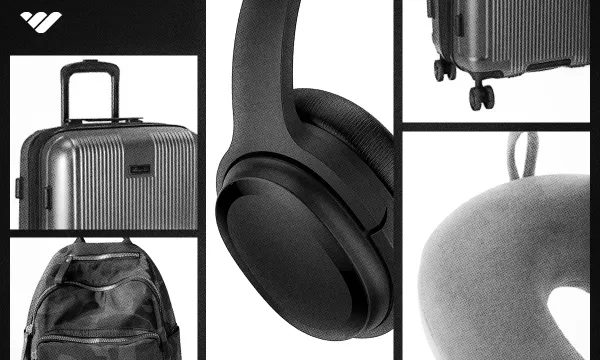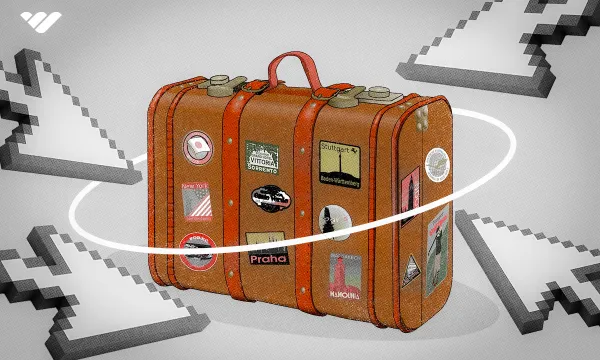When did you last go on a trip without reading recommendations for places to visit, to eat, and things to try? The internet has completely changed how people plan holidays, and travel blogs play a huge role in that decision-making process.
If you are a traveler who seems to have a knack for finding hidden gems and you’re considered the go-to person for travel recommendations for your friends and family, maybe it’s time to consider starting a travel blog.
While the allure of traveling, experiencing different cultures, and creating content sounds like a dream job, maybe you’re wondering: How can you write a travel blog that stands out and helps you monetize your efforts?
Let’s explore how to start and monetize a travel blog and look at a few tips and best practices from well-known travel bloggers to get your creative gears turning.
Why Write a Travel Blog?
First things first: Why should you start a travel blog?
Travel blogs usually start as passion projects for people who love to travel—but they’re so much more than that. While it can feel like having an online diary, starting a travel blog can bring many opportunities and benefits. Here are just a few of them:
You get to share your passion for travel with others
People who are travel fanatics know what it’s like when you’ve just unpacked your suitcase, and you’re already excited for your next trip. Having a travel blog will allow you to share your passion with other travelers who are always looking for new destination ideas.
Blogs create a new revenue stream
While you might start your blog out of curiosity, being strategic and consistent will help create a new revenue stream. There’s no doubt there are popular travel bloggers who earn a decent amount of money from their travel blogs.
It helps to build a personal brand or business
Your online presence can make all the difference in today's digital world—especially if you’re a content creator. That’s why having a travel blog can be vital for establishing a personal brand or business that people will recognize and appreciate.
Travel bloggers experience new places and cultures
A travel blog will open up new opportunities to travel, visit new places, and experience different cultures. With your travel blog, you can document those experiences for yourself, but also in a way that makes it easy to share with others, too.
You can build a community of like-minded individuals
An online community is a valuable asset for content creators. You get a chance to build a tight-knit circle of people who follow and support your journey.
Selling digital products goes hand in hand with blogging
Content creators have different ways to monetize their travel blogs. One of them is to start selling digital products. Whether travel guides and eBooks, online courses, travel templates, or checklists, travel bloggers can create various digital products to sell and monetize their efforts.
"My biggest tip is to just start. Sign up to a simple Blogging platform like WordPress to get started, and then choose one social media platform to put your all into to support that blog - whether it's Instagram, TikTok, or YouTube - and just go for it! Be consistent, show up as often as you can, and have fun with it!"
-Catherine Lux, Travel Blogger at LuxLifeLondon
How to Write a Travel Blog You Can Make Money With
There are many tips on starting a travel blog out there, but you rarely find tips on writing a travel blog that will bring you an additional revenue stream. Let’s get into the nuances and intricacies of what good travel blog writing looks like and how other creators stand out by using unique approaches.
1. Start by researching the industry
If you’re just starting out, do your due diligence and research other travel blogs. This will help you understand what works well for others and what you can apply to your travel blog. During this process, you’ll be able to see what niches are oversaturated and where there’s potential to thrive. Analyzing other travel blogs will allow you to find a unique angle or specialty and pinpoint what sets you apart. By defining your unique selling proposition, you can position your blog effectively.
Ashley Cummings, for example, has positioned her travel blog as one for those who want to “build a life that fits in a backpack.” It’s about keeping minimal possessions, moving to new locations frequently, and staying flexible for travel opportunities (even with young children.)
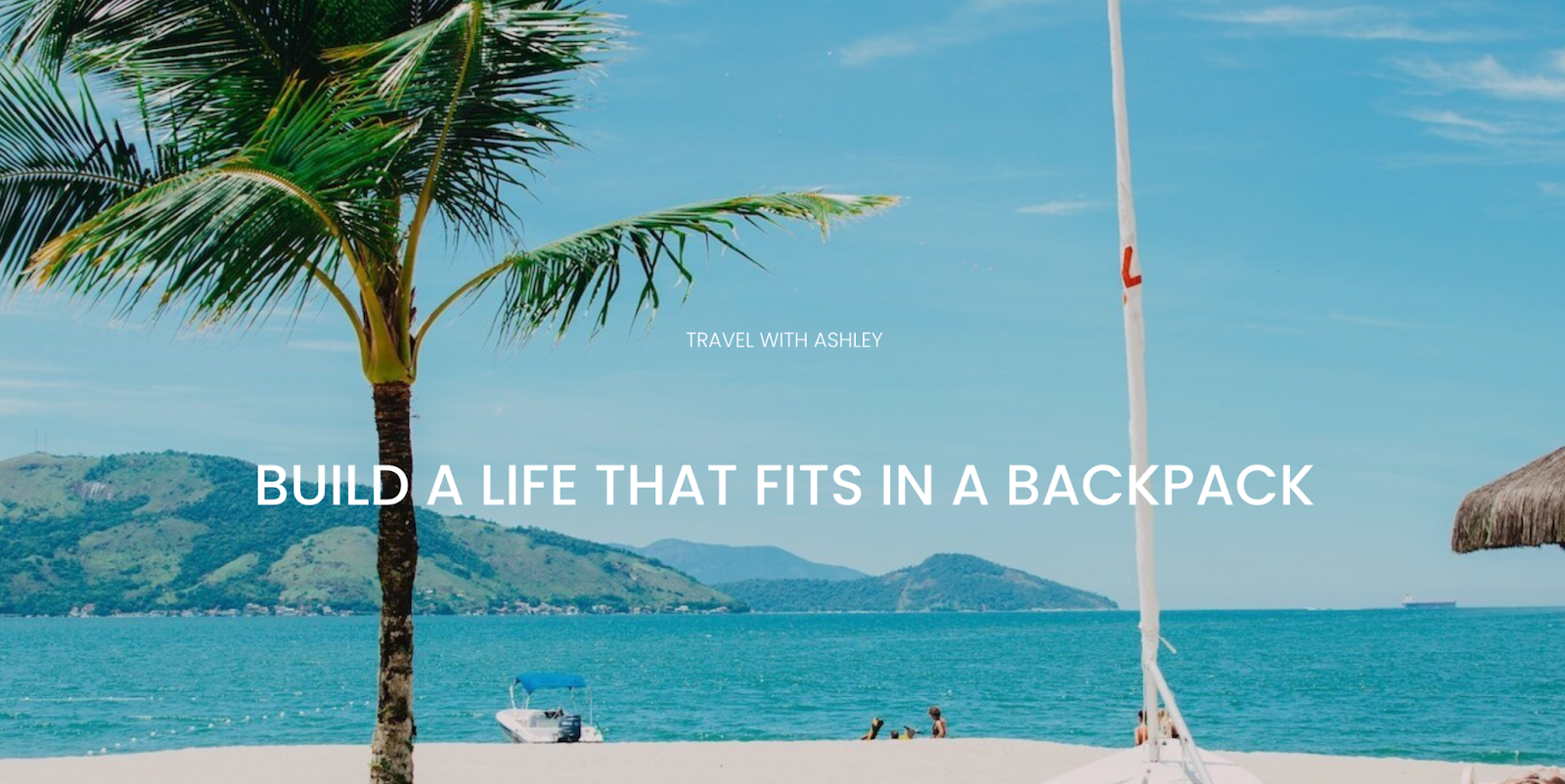
“People are interested in niche, authentic, beautiful, and helpful content. When you start your blog, consider what you uniquely bring to the table and create your content around that.”
-Ashley Cummings, Travel Blogger at Life in a Backpack
2. Consider your own experiences
For most people, the idea of starting a travel blog can seem scary. What if you don’t have enough content to share? What if you can’t afford to visit some expensive resorts where other travel bloggers go? The good news is you don’t have to fit the mold when it comes to travel blogging.
Think about what makes you different from the other travel bloggers. Are you someone who travels on a budget, in luxury, or alone? Positioning yourself right from the start can set you apart from other travel bloggers.
Moreover, if you base your blog on your own experience, the content creation process will not seem overwhelming and cumbersome. Take Adventurous Kate, for example. She is a travel blogger who teaches women how to travel the world safely and helps them enjoy traveling alone. On her blog, you can find different destination recommendations, solo female travel guides, and travel resources.

3. Explore travel niches and choose one for your blog
Instead of catering to everyone's needs and tastes, you should narrow down your focus and create relevant content for a niche audience to boost your engagement. There are many travel niches, including adventure travel, culinary tourism, backpacking, wellness travel, mountaineering, birding tours, and so much more.
"To find your niche as a travel blogger, let your personal experiences shape your story. It's your unique perspective that will set you apart—share your journey as only you can, and the right audience will follow."
-Ivonne Aldaz, Travel blogger at goodworldliving.com
By creating specific content, your blog can become the go-to hub for people who share similar interests as you. This is exactly what Pete from the Bucketlistly Blog has done with his travel blog, specializing in backpacking, hiking, and photography. Pete creates travel guides and itineraries for different locations, with detailed maps from his backpacking trips, making his blog the perfect resource for other backpackers.
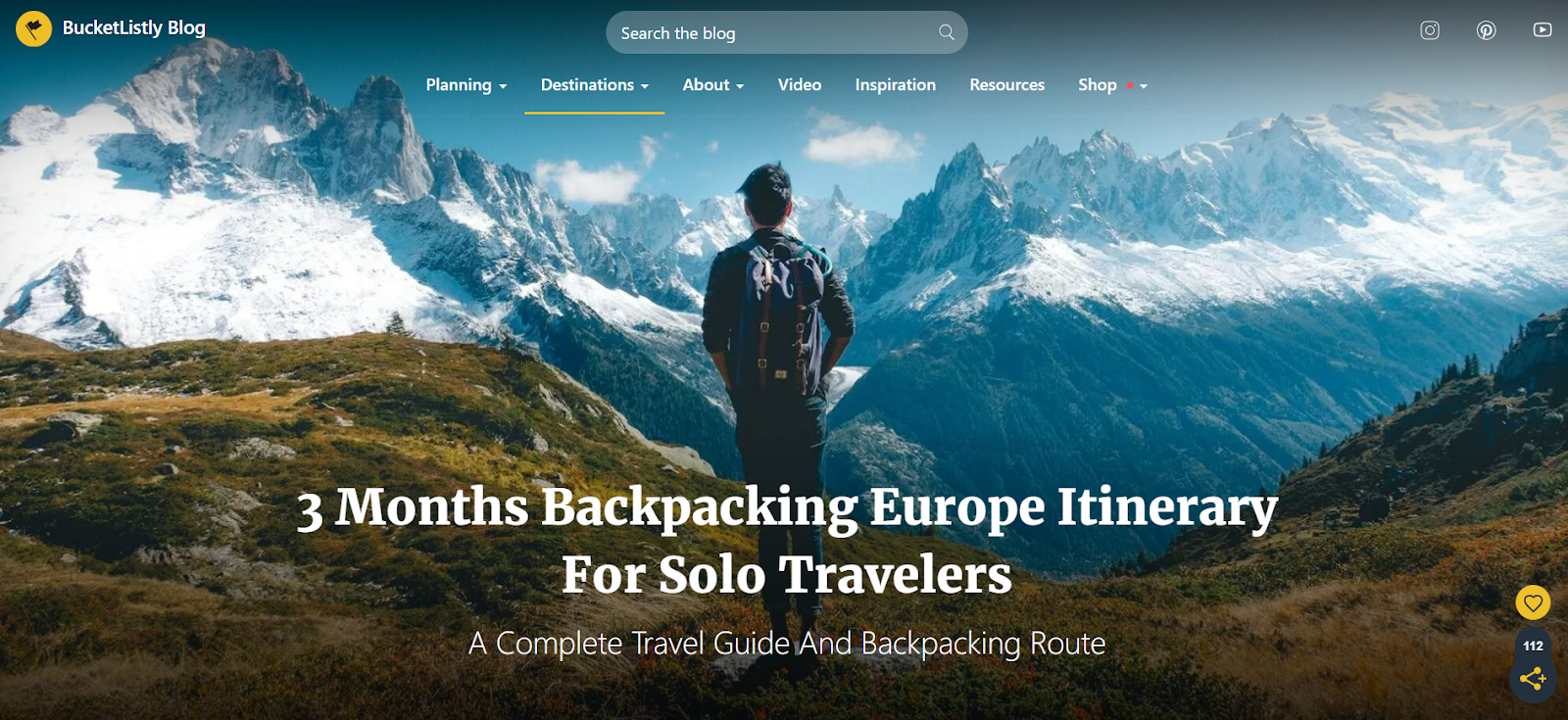
4. Choose a blogging platform
Once you've done the research, positioned yourself, and defined your niche, it’s time to choose a blogging platform. There are many platforms out there that allow you to upload content and customize your blog. Here are some of the most popular blogging platforms for travel writers:
- WordPress. WordPress is one of the most popular blogging platforms that offers flexibility and customization. With an array of plugins and themes, WordPress allows you to tailor your site and integrate travel maps and booking systems, which makes it a popular choice for travel blogs. However, it comes with a steep learning curve and a need for regular maintenance.
- Wix. Wix is an intuitive website builder with a user-friendly, drag-and-drop interface, and a variety of templates, and built-in tools such as booking forms and galleries. Unlike WordPress, Wix can be less flexible in terms of customization and scalability, and it has integration limitations that might affect the functionality, especially if you want to have a more complex travel blog.
- Squarespace. If aesthetics are important to you, Squarespace might be the best fit for your travel blog, because of its visual appeal. Moreover, Squarespace offers a range of beautiful, mobile-responsive templates and has built-in tools for SEO and analytics. On the downside, Squarespace is less customizable compared to WordPress and has fewer third-party integrations.
5. Create your marketing and distribution plan
The digital space is overflowing with content, so if you want to capture your readers’ attention, you have to be where they are—and nowadays, that’s usually social media. If you don’t want to create content that will collect digital dust and never be seen, you should build a content distribution strategy leveraging those social channels.
Content distribution is as important as content creation, and without distributing your content through channels like social media and email, it will be tough to reach your audience.
Additionally, optimizing your content for SEO can help you get more eyeballs, ultimately converting readers into loyal followers. First, you need to understand the difference between owned, earned, and paid media.
- Owned media refers to the content and platforms that are under your control, such as your travel blog and social media profiles
- Earned media involves publicity gained through efforts other than paid advertising, often resulting from public relations, social media engagement, or organic mentions.
- Paid media refers to any form of advertising or promotional activity, such as paid search ads, social media ads, and sponsored content, in which you pay to reach your target audience.
A great example of how to build your content distribution channels is Nomadic Matt—the New York Times best-selling author of 'How to Travel the World on $50 a Day and Ten Years a Nomad'. Nomadic Matt shares a free travel starter kit for readers who subscribe to his email, including a step-by-step checklist, packing list, tips cheat sheet, and more. This way, he can build an email list and use it to distribute his content without relying on social media algorithms.
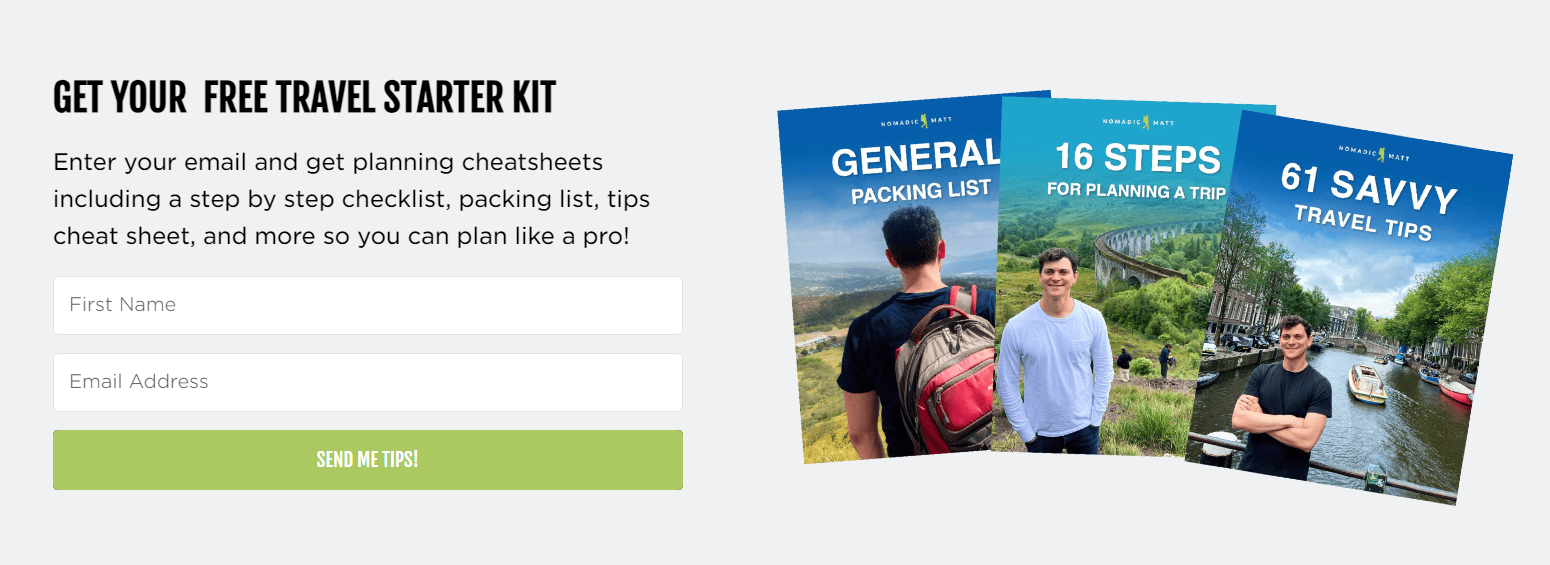
6. Create your first post
After you set up your travel blog, it’s time for your first post. Your writing style and tone of voice can make all the difference. Focus on writing clear, concise, and compelling content that adds value to your readers.
Travel blogs are about painting a picture to help readers envision the whole experience. That’s why storytelling techniques, sensory-rich descriptions, and personal anecdotes can create a deeper connection with your readers. Blogger The Blonde Abroad focuses on solo female travel, offering smart tips and tricks for women alone traveling abroad and beautiful images to get people inspired.
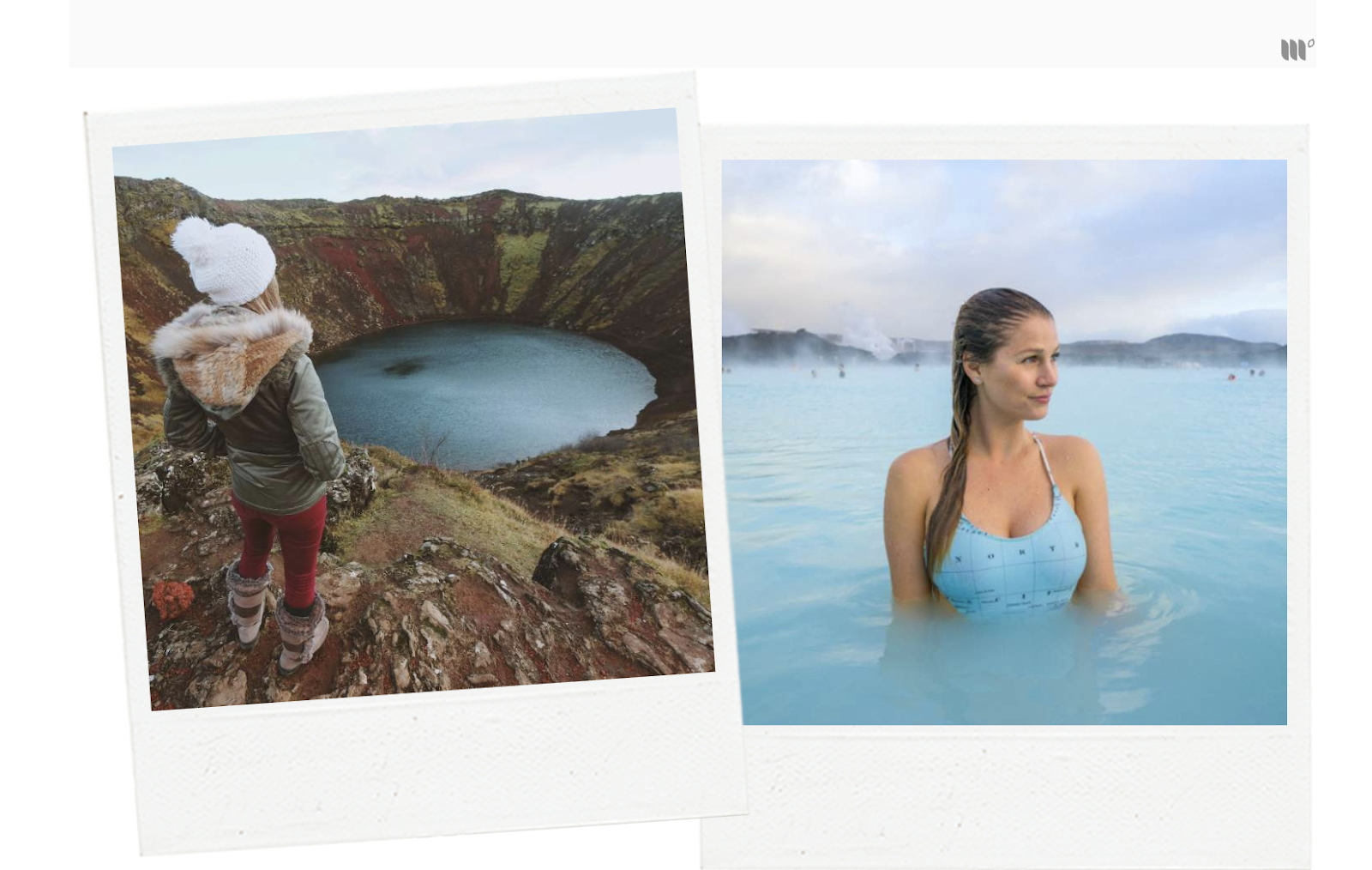
Compelling visuals such as high-quality photos and videos can enhance the storytelling, making the travel experience more immersive and memorable. To make the content more engaging, ask questions, anticipate what readers want, and answer those questions in your blog posts.
Last but not least: include a call-to-action (CTA). Instead of just sharing information, encourage your readers to take action. Whether it’s downloading a piece of content or booking their next trip using your affiliate link, adding a CTA will take readers to the next step.
7. Continue to create engaging content
Creating a loyal base of readers requires consistency and a unique brand voice that separates you in the sea of content. Travel blogs are not just for nice photos, so make sure to always give relevant information that will help readers find the best spots, popular places, and unique destinations.
Consider incorporating interactive elements such as quizzes and polls to engage your readers and collect email addresses to build a newsletter list. Another way to make your content more engaging is to invite guest bloggers to include different perspectives and experiences.
Travel blogger Kiki offers countless resources on everything from solo travel to packing guides to photography tips. Not only can readers filter content based on the type of trip (solo, female, adventure, budget, luxury, travel, etc.), but there’s also a segment with an interactive map where readers can filter content by destinations.
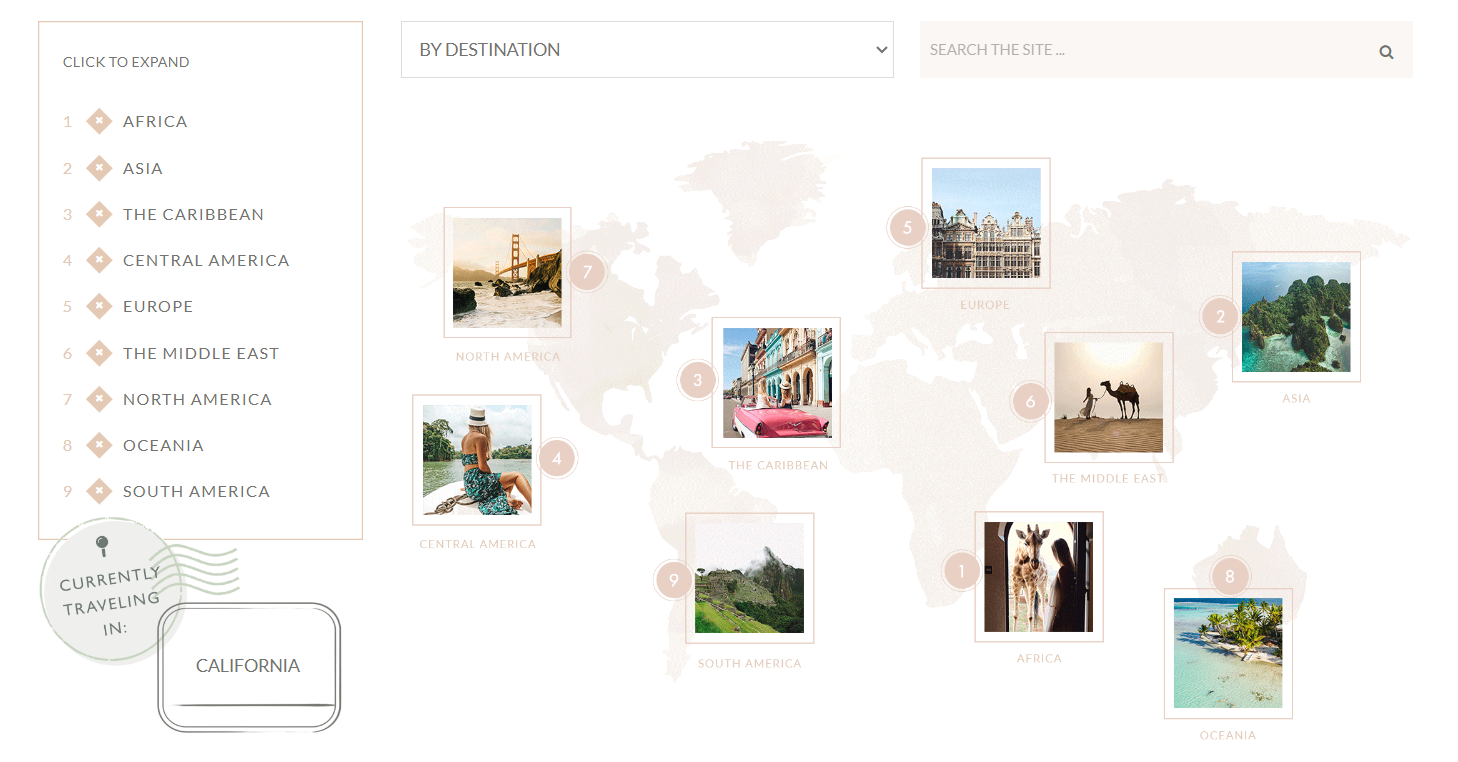
8. Don’t ignore SEO
Even though you’re a content creator, and SEO optimization might sound too complicated and technical, you should pay close attention to it. The reason? Using keywords and SEO strategies can improve your blog’s visibility in search engines and help people find your content easier.
First, you need to map out the keywords you want to rank for and then use those keywords strategically in your content. You can also use tools like Yoast SEO or All in One SEO, popular WordPress plugins that guide you through on-page optimization by suggesting keyword improvements, readability, and meta descriptions.
If you want to go the extra mile, tools like SEMrush or Ahrefs offer comprehensive keyword research, competitor analysis, and backlink tracking to help you identify opportunities and refine your SEO strategy.
9. Network with other bloggers
The good news about blogging is that you don’t have to do everything alone. Networking with other bloggers can be a great way to reach new audiences and boost your blog’s visibility.
You can collaborate on exciting projects, introduce guest blog posts, or organize joint promotions to diversify your content and scale without all the heavy lifting. Building relationships with influencers and industry experts can also bring valuable backlinks to your site, enhancing your SEO and driving more organic traffic.
Plus, engaging in blogging communities and attending industry events keeps you in the loop with the latest trends and best practices. It’s a great way to share ideas, learn from others, and support supporting one another to grow your blogs together. So, don’t hesitate to get out there and take your travel blog to the next level.
How You Can Monetize Your Travel Blog
While having a travel blog sounds like a great hobby, traveling is expensive. So why not use all the content you create to monetize your travel blog? Here are some ways to do it:
Build your audience
The first step to monetizing your blog is building an audience. Understanding the needs and wants of your target persona can help you create valuable content for your audience that you can later monetize. The only way to create content that resonates with your audience is to know exactly what content they consume and what topics they are interested in.
Write product reviews
If you use specific travel gear repeatedly, you’ve got the best pants for hiking, or you’ve discovered must-have items for frequent travel, you can write about these products and build a name for yourself as a marketer for specific types of travel gear.
Terradrift, for example, reviews things like hiking sandals, hammocks, and other backcountry hiking gear--and as a result, brands often partner with this travel blogging duo and send free products for them to review. From there, they can earn a commission from products sold, build brand partnerships, get exclusive invites on special brand-led trips, and other insider perks.
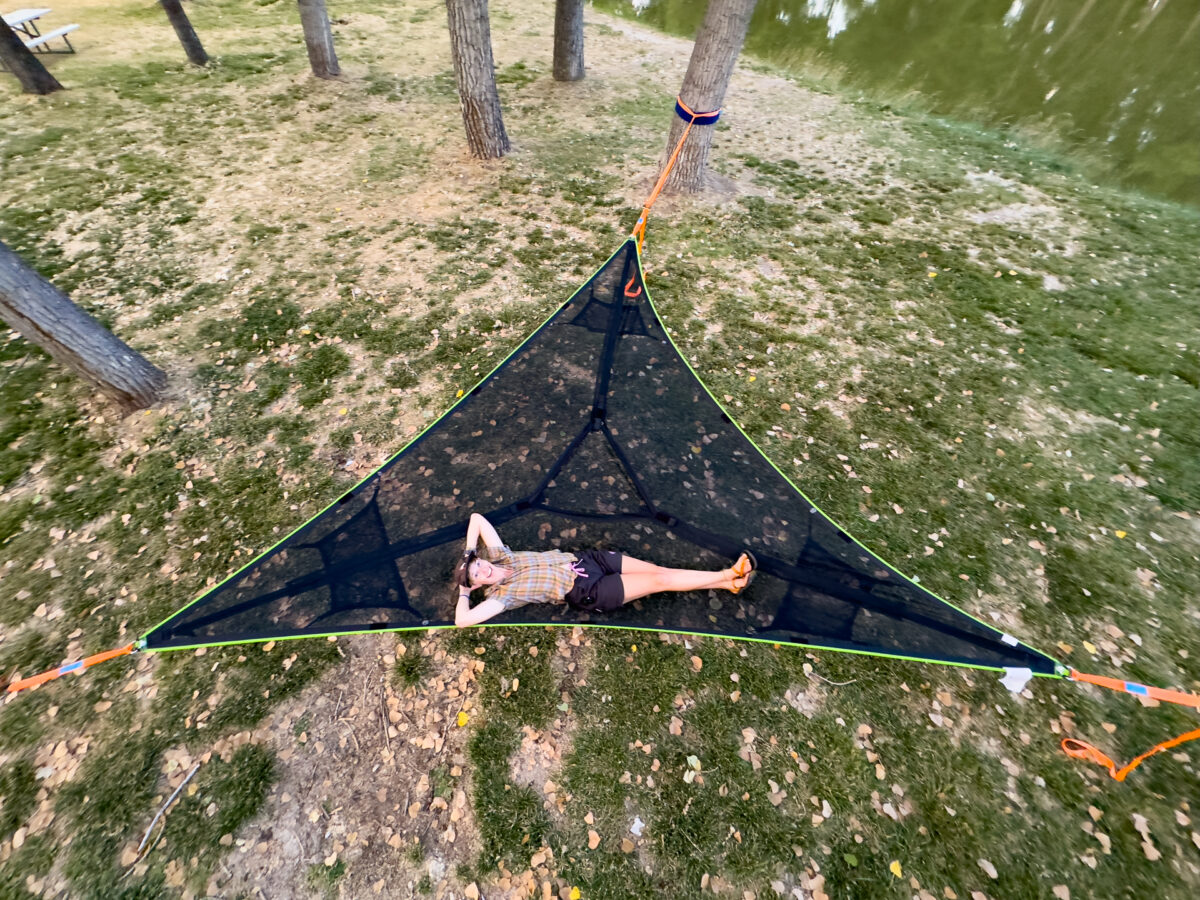
Try affiliate marketing
Another popular way to monetize your blog no matter where you are is to use affiliate marketing. Affiliate marketing is when the “affiliate” promotes products or services to the affiliate’s audience and receives a commission based on the number of affiliate sales. In other words, you can earn a percentage from the products or places you promote on your blog.
Claudia from Zeebalife, a luxury travel blog, has a “Shop my favorites” section where blog readers can explore and buy her favorite products, such as sun hats, swimsuits, vitamins, etc. Make sure to always be transparent and clarify that you earn a commission from the sales. Also, keep in mind that the products you’re promoting should be related to your travel blog, as it’s the only way to promote them without coming off as aggressive or pushy. You should also disclose if you’re earning affiliate revenue.

Ask for donations
Donations are another way to monetize your blog. You can always ask your audience to support your work by donating. Consider setting up a PayPal donation button or a Buy Me a Coffee page, as straightforward options for accepting one-time or recurring contributions from your readers. However, if you’re looking for a social commerce platform that will be a one-stop shop for structuring your communities and selling digital products, you should consider Whop, which also allows you to accept donations and tips.
Paywall your content
Content creators usually go the free content route and rely on sponsorships and ad revenue for income. But, you can always choose to paywall part of your content as a way to monetize your travel blog. Before making the decision to charge readers for accessing your content, consider the pros and cons of putting your content behind a paywall. If you choose to do it, make sure you have a healthy balance of free and paid content to keep your audience engaged even if they decide to stick to the free content.
Create a paid community
You’ve probably witnessed many travel bloggers who decide to start a paid community where they can sell courses, organize virtual events, offer 1:1 coaching, or have interactive Q&A sessions for community members to provide additional value beyond your free content. Christian LeBlanc became known for his YouTube videos of popular destinations worldwide. Later, he created the Lost Creator Academy to help other travel lovers become full-time content creators.
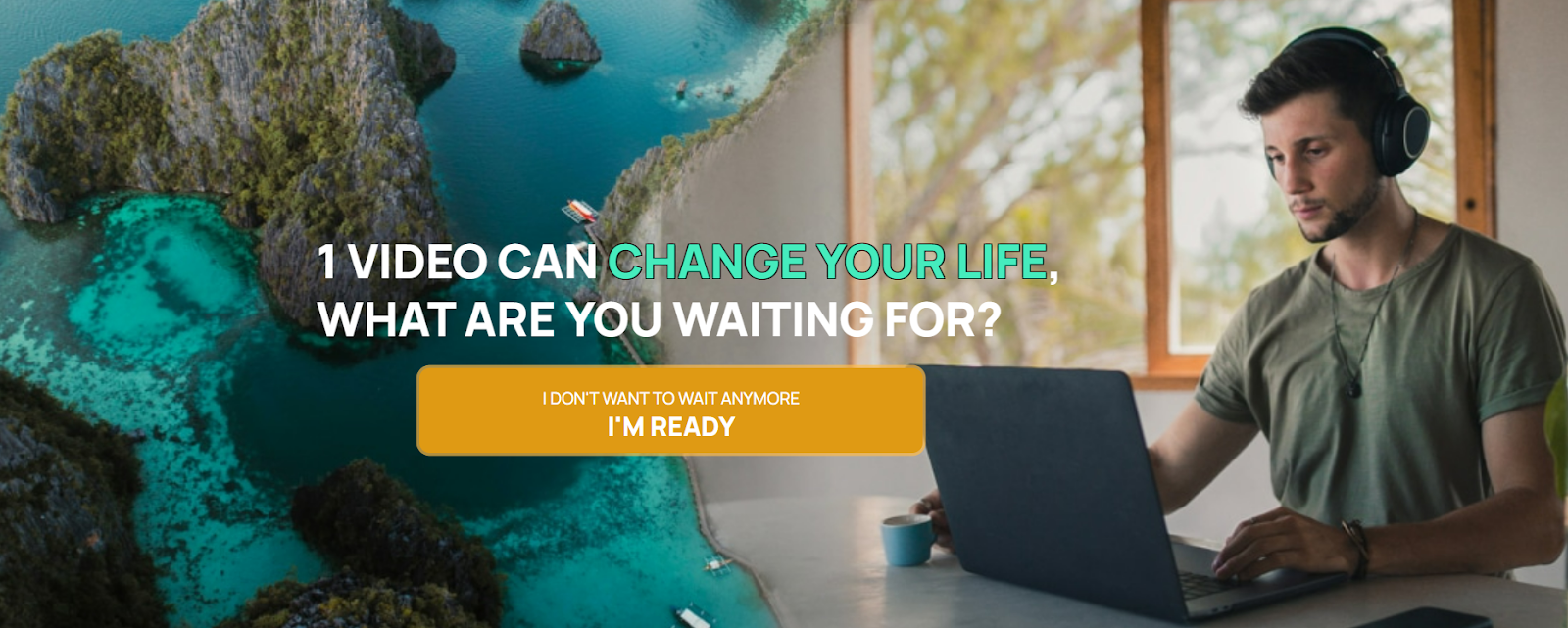
Use paid ads
The more traffic your blog generates, the more interesting it gets for advertisers, making paid ads a great way to monetize your efforts. You can partner with ad networks like Google AdSense to display contextual ads that earn you money based on clicks or impressions. Alternatively, you might work directly with travel brands or tourism boards to feature sponsored content or display their ads, providing a more tailored approach to your audience.
Sell digital products
If you have years of traveling experience under your belt and you know some tips and best practices that can help others enjoy their trips, you can always create and sell digital products such as travel guides, checklists, and itineraries. Promoting these digital products through your blog and email newsletters can generate revenue while providing your readers with practical tools that enhance their travel experiences. Selling digital products can be a great way to earn passive income.
5 Travel Blog Best Practices and Examples
Now that we’ve gone through the whys and hows of writing travel blogs, it’s time to see how other popular travel bloggers use creative ways to stand out and offer something different.
1. Organize your blog posts into sections
Even if you’re just starting out, think about the structure of your travel blog. As you create new content, it will become harder for readers to find the necessary information. Without good organization and filtering options, finding the blog posts readers are interested in can seem like looking for a needle in a haystack. That’s why you need to have a clear blog structure and make your content easy to explore and navigate.
For example, Girl Eat World has a separate section with city guides, where readers can easily go through the content and find what they need.
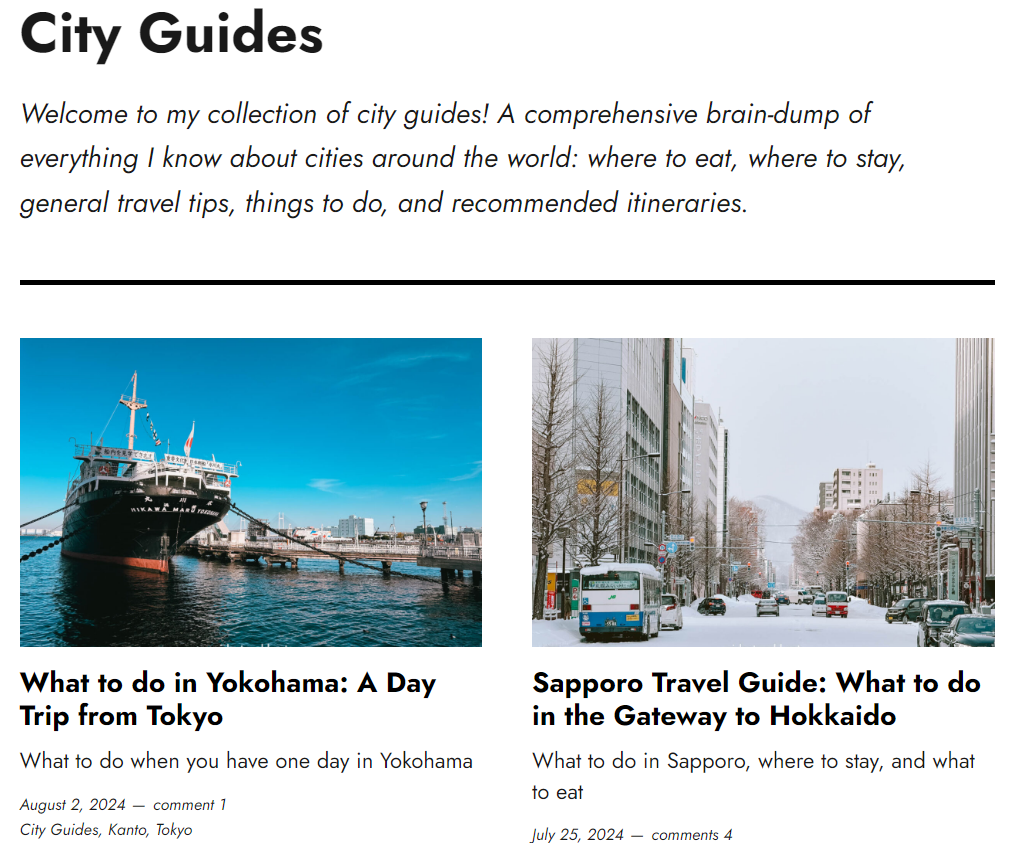
2. Create in-depth reviews with valuable information
Unlike fashion blogs, where photos are crucial for success when it comes to travel blogs, readers expect in-depth reviews, valuable information, and tips on finding the best places. So, while having a variety of photos and videos can engage blog readers, make sure to give them all the information you would love to have before visiting a specific destination.
Voyagefox does exactly this. In her blog posts, you can find exact locations, maps, room reviews, different available activities, food recommendations, and much more. In a word, everything you need to know to make the most out of your trip.
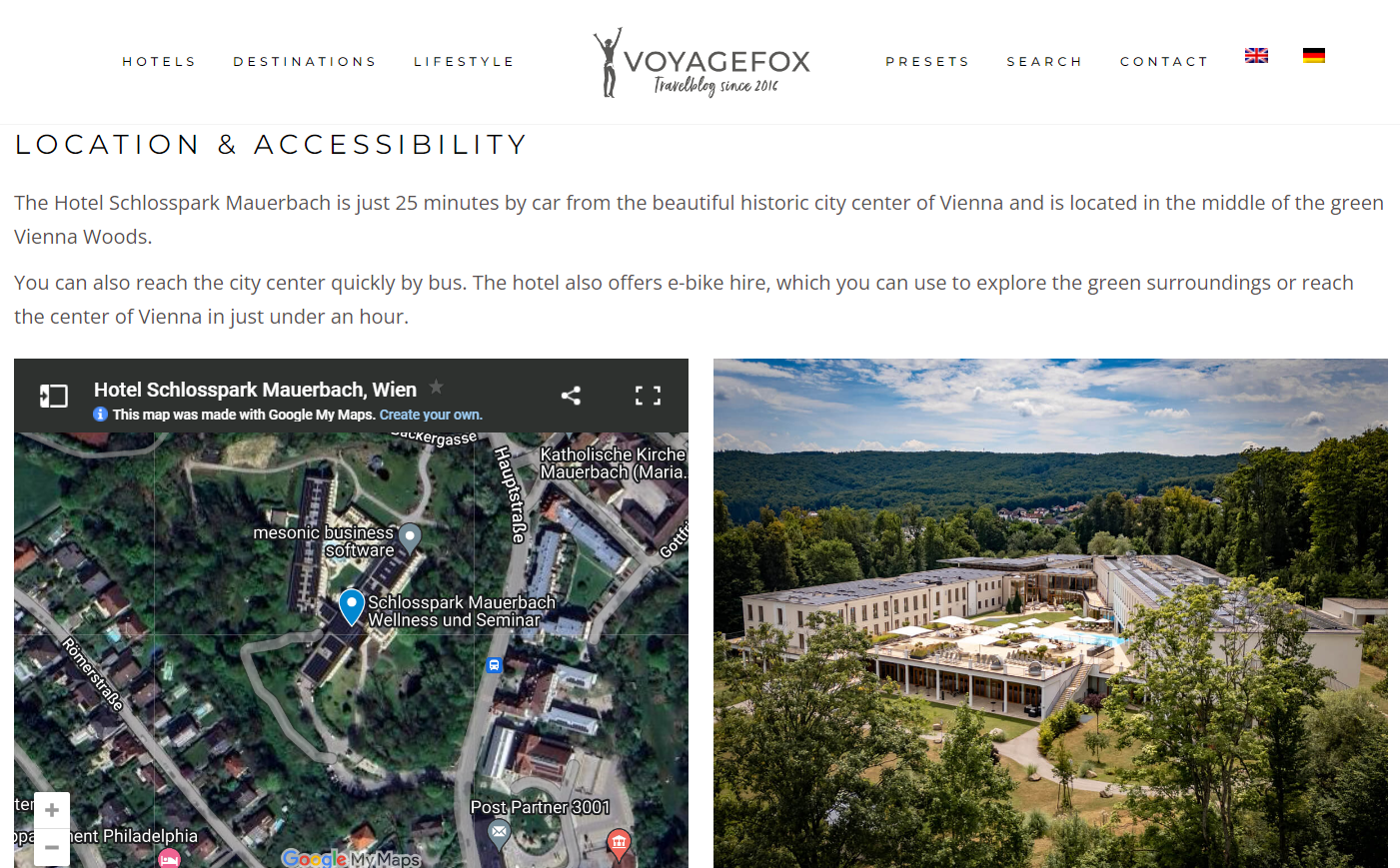
3. Create different offers
Having a travel blog opens up many different opportunities for content creators. Besides the possibility of selling digital products, you can also create multiple offers including influencer marketing and content creation, consulting, and advertising.
Take Nathalie, for example. Readers can browse her blog, Jetset Christina, to find the most epic destinations and the best hotels around the globe. But that’s just the tip of the iceberg because Nathalie also offers influencer marketing, content creation, strategic brand consulting, advertising, and even honeymoon planning.

4. Stand out with a recognizable design
If you want to stand out from other travel blogs, you can always rely on the power of design. From unique fonts and distinct color palettes to original imagery and a cohesive layout, your travel blog design can be the ace up your sleeve.
If you check Salt in our hair, a travel blog by Nick and Hannah, you can’t help but notice the distinctive logo, personalized icons, and custom font. On top of that, their travel blog is user-friendly and allows you to filter different destinations to find what you’re looking for in a few clicks.
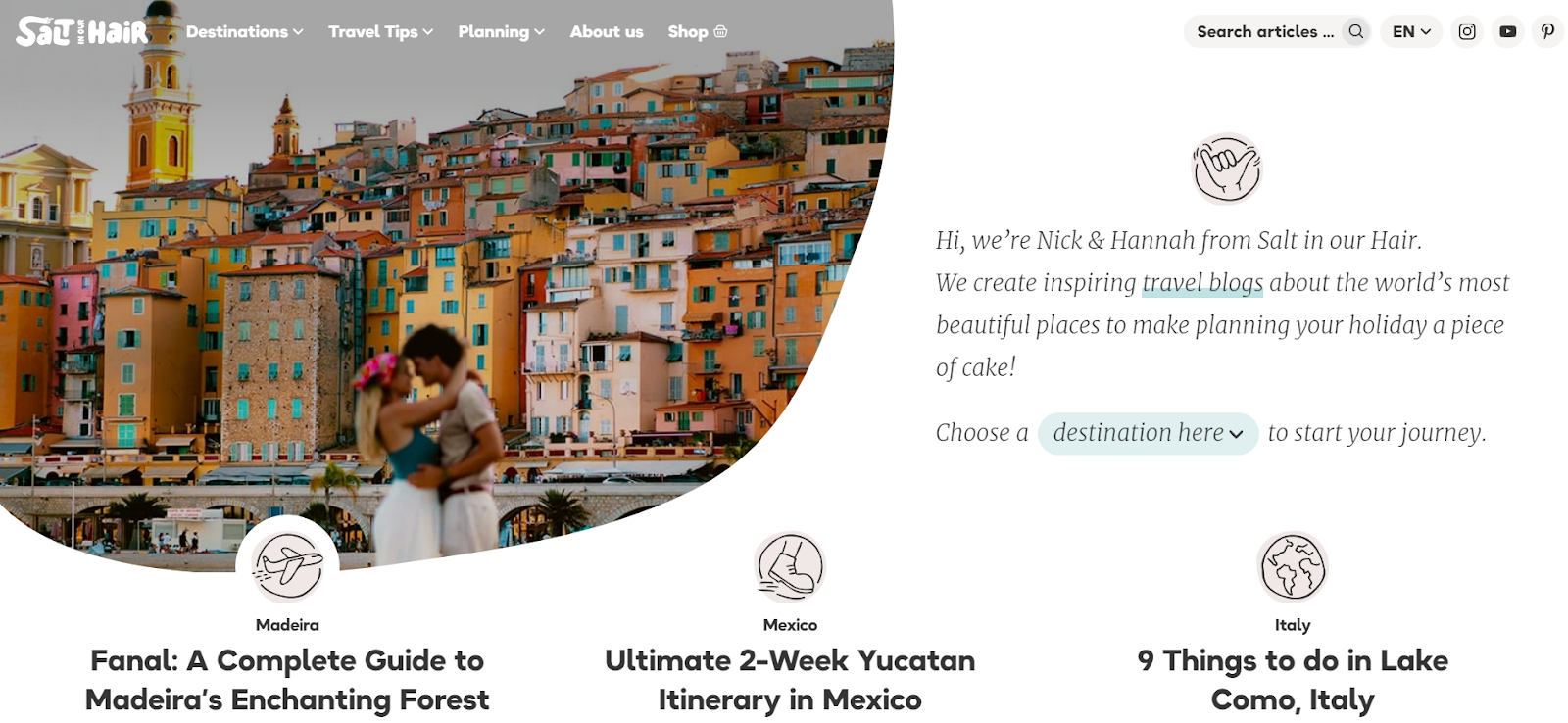
5. Use the power of storytelling
What makes some of the best travel blogs different is how content creators share their stories. Instead of just listing destinations and activities, dive deep into personal experiences and share the emotions and adventures you encountered.
Liz from Young Adventuress will capture your attention right from the get-go. More than a travel blog, Young Adventuress is a space filled with stories and misadventures about her travels over the years, as well as some musings about life.
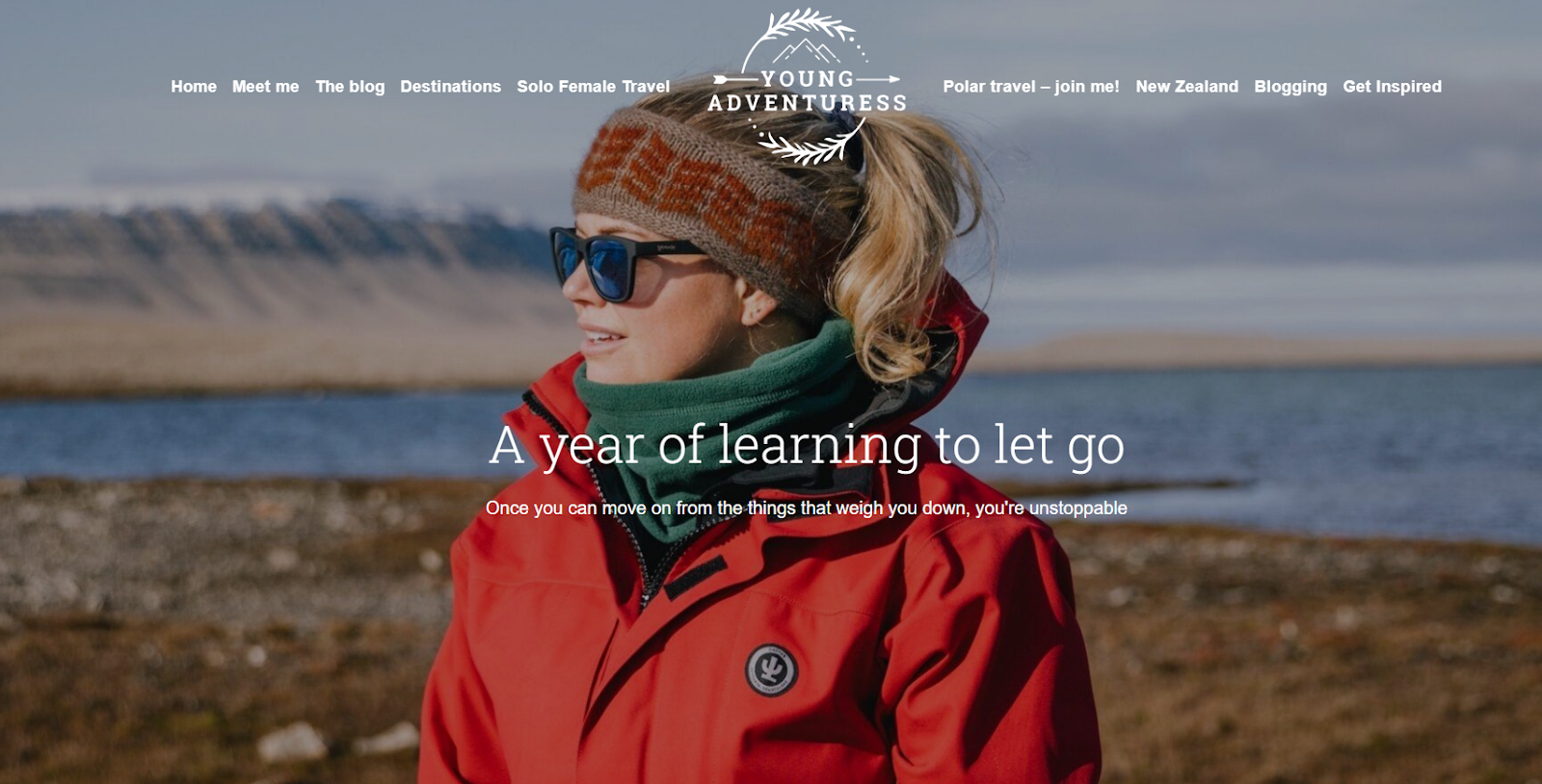
Write and Monetize Your Travel Blog With Whop
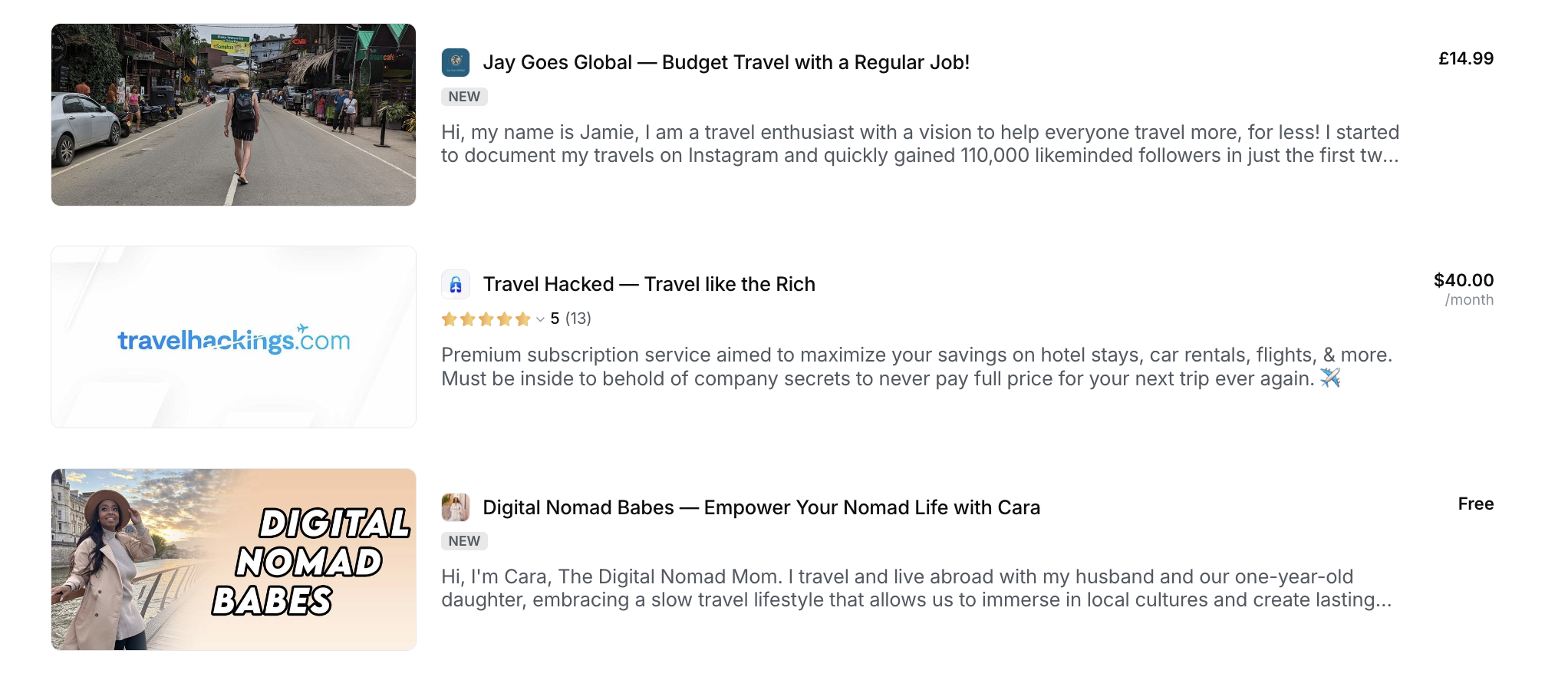
And there you have it—tips, best practices, and real-world examples of well-written travel blogs that keep readers engaged. By incorporating these learnings, you can differentiate your blog and create a unique internet corner catering to a niche audience with the same passion for traveling.
Whether you’re just starting or you already have a travel blog, you can always maximize its potential by creating a paid community, selling exclusive content, or using affiliate marketing. All these options can help you create a deeper connection with your audience and share additional value by offering detailed guides, personalized advice, and interactive Q&A sessions while at the same time allowing you to make extra money. A win-win. The best part? You can do all of this right here, with Whop.
Here on Whop, Marielena of Marielena travels shares her travel tips, guides, and insights with her online community. Meanwhile, Girl Boss Abroad makes money with paid courses and newsletters that teach others how they can work remotely while traveling. These are just a couple of the travel creators who choose to work with Whop as their platform.
When you sign up to whop you can create your own whop hub and add a place to chat, share affiliate links, download files, host live video calls, and more. All for no platform membership fees - Whop only makes money when you make money.
Ready to make the most out of your travel blog? Start today with Whop.
